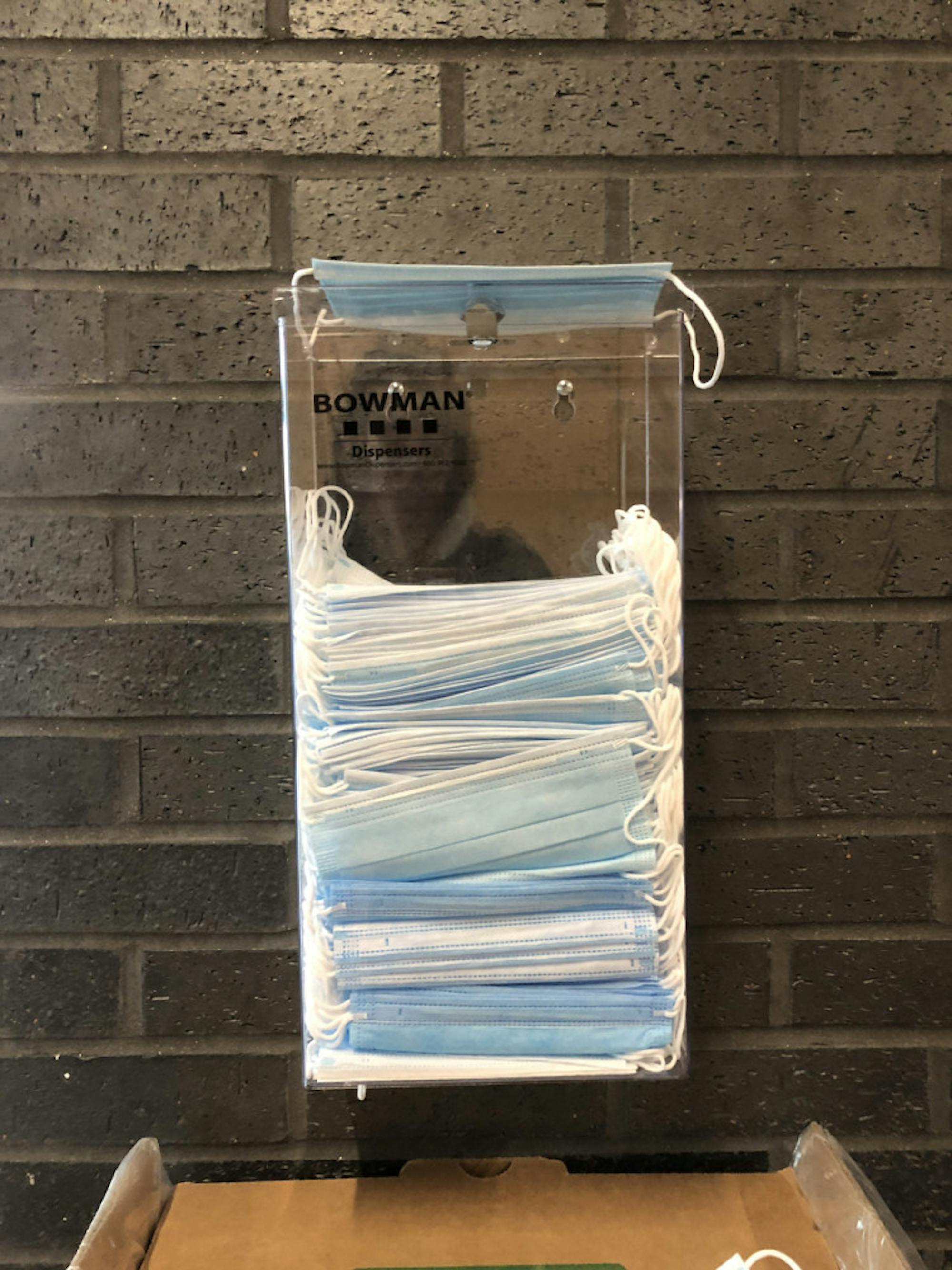Tuftsannounced plans to lift the university mask mandate and shift from surveillance to symptomatic testing in an email to the Tufts community on March 16. Depending on case counts following students’ return from spring break, these changes will go into effect by the third week of April.
For the first time since the return of spring break, COVID-19 cases are showing signs of improvement on the Medford/Somerville campus. Tufts reported 20 new cases on Saturday and the average number of positive COVID-19 tests on the Medford/Somerville campus has gone down nearly 28% over the past week.
Dr. Elissa Perkins, associate professor of emergency medicine at Boston University School of Medicine, explained why it is currently safe to lift mask mandates.
“In my mind, the goal of most interventions right now should be to prevent outbreaks of severe disease in a population,”Perkins wrote in an email to the Daily. “At this point in the pandemic, we have a situation in which we can prevent outbreaks of severe disease even without mask mandates.”
She emphasized the strength of existing resources to combat the health risks of COVID-19.
“We have access to a vaccine that continues to be incredibly protective against severe disease/death even in the face of the variants that are currently circulating, and an [Emergency Use Authorization] for a pre-exposure prophylaxis medication for those who may not mount a sufficient response to the vaccine,”Perkins wrote.
Perkins added that testing is another important tool for the current stage of pandemic response.
“Additionally, we have readily accessible tests, so those with symptoms can quickly know that they are Covid positive, and can isolate appropriately and prevent further transmission,” she wrote. “We also have readily available medications that prevent disease progression if someone does test positive and is at risk of severe disease.”
Perkins suggested that the greatest risk to public health now is being unvaccinated.
“There are definitely populations that are at higher risk of severe disease, and at this time the most significant risk factor for severe disease is being unvaccinated,” she wrote. “It is imperative, as we move back toward normalcy with a lifting of pandemic restrictions, that we continue to encourage vaccine uptake among all populations that are eligible.”
She discussed the effectiveness of one-way masking for immunocompromised and elderly individuals.
“As restrictions such as mask mandates are lifted, those individuals can continue to be safe by practicing one-way masking if they are in situations which may put them at risk of getting disease,” Perkins wrote.
Perkins suggested that COVID-19 policies should primarily be guided by rates of severe hospitalization, rather than positive case numbers, moving forward.
“I would argue that we should not be following case numbers of Covid-19 at this time, as we create policies,” she wrote. “Fortunately, vaccines have decoupled cases of Covid-19 from severe disease and hospitalization. Those are the metrics that are more important than simple caseload at this time and I would recommend that we base our policies on rates of hospitalization for Covid rather than cases themselves.”
Michael Jordan, university infection control health director, explained how Tufts decided to move toward lifting masking restrictions.
“To some extent the fact that the omicron variant is less virulent, on average in highly vaccinated populations, compared to other variants of SARS-CoV-2 does figure into our decision making,” Jordan wrote in an email to the Daily. “However, possible changes to our masking requirements are also highly influenced by the number of incident Covid-19 cases in our local communities and on campus.”
He discussed why the university chose the third week of April to lift its mask mandate.
“With students having returned from spring break on March 28, the third week of April allows time for us to assess for any potential post-break surge and to fine-tune guidance based on available evidence and perceived risks at the time,” Jordan wrote.
Jordan described what the transition from surveillance testing to symptomatic testing will look like.
“Symptomatic testing is used to identify infection in individuals who have signs and symptoms consistent with COVID-19,” he wrote. “Once we switch to symptomatic only testing, routine surveillance testing will not be available.”
Although Tufts is lifting key pandemic restrictions, Marie Caggiano, the medical director of Health Service, explained why the university is maintaining its“test-out” policy for COVID-19-positive students in isolation.
“The testing out of isolation policy is an extra measure to ensure that students who tested positive are no longer shedding the virus and potentially infectious before they leave isolation,” Caggiano wrote in an email to the Daily.
Caggiano explained that Tufts is taking necessary steps in the new stage of the pandemic and will continue to monitor trends.
“These steps are appropriate and responsible given the data we are seeing,” she wrote. “Having said that … we’re proceeding cautiously and are prepared to reinstate measures if we see the number of cases increase or a new variant emerges.”






